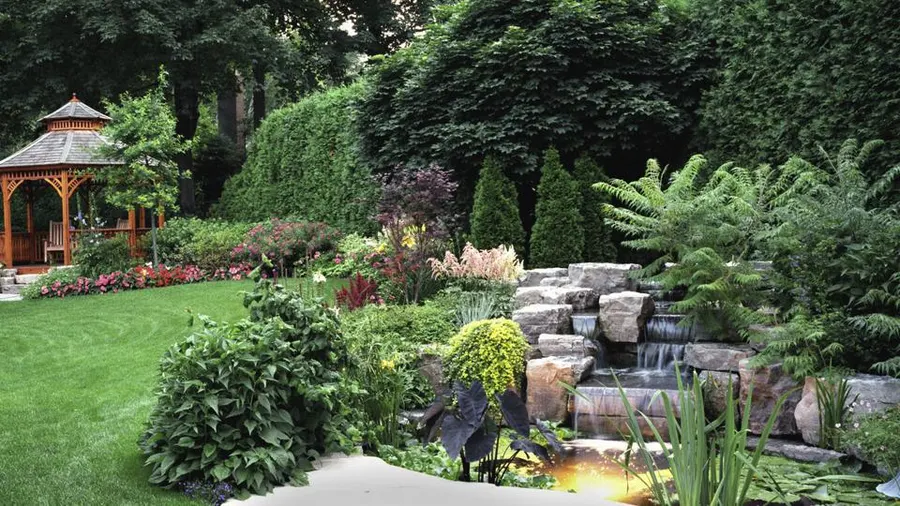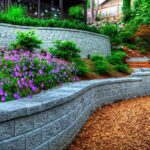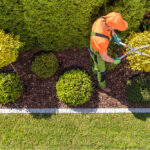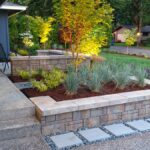The time-saving strategies to create a low-maintenance landscape include designing with simplicity, utilizing smart irrigation systems, choosing low-maintenance materials, implementing mulching and turf alternatives, among others.
Maintaining a beautiful and well-kept landscape can be a time-consuming task, especially for busy homeowners.
However, with the right strategies and approaches, it’s possible to create a low-maintenance landscape that saves you time and effort while still enhancing the beauty and functionality of your outdoor space.
In this article, we will explore time-saving strategies for creating a low-maintenance landscape.
How To Create A Low-Maintenance Landscape
1. Design with Simplicity in Mind
When planning your landscape, opt for a design that emphasizes simplicity.
Choose clean lines, minimalistic features, and open spaces that require less maintenance.
Simple designs not only create an elegant and modern aesthetic but also reduce the need for frequent upkeep.
Consider using native plants that are adapted to the local climate and require minimal water, fertilizer, and pest control.
These plants are typically hardy and can thrive with minimal intervention, reducing the time and resources needed for their care.
You should also read: Best Way To Prepare Your Garden for Winter
2. Implement Smart Irrigation Systems
Watering is one of the most time-consuming aspects of landscape maintenance. Installing a smart irrigation system can significantly reduce water waste and save you time.
Smart systems utilize weather data and soil moisture sensors to automatically adjust watering schedules based on the specific needs of your plants.
This eliminates the guesswork and ensures that your landscape receives the right amount of water without over-watering or under-watering.
By investing in a smart irrigation system, you can save both time and money while promoting water conservation.
Related Article: Best Practices For Minnesota Landscape Irrigation System
3. Choose Low-Maintenance Hardscape Materials
Incorporating hardscape elements in your landscape design in Minnesota can significantly reduce the need for ongoing maintenance.
Opt for low-maintenance materials such as concrete, gravel, or pavers for pathways, patios, and driveways.
These materials are durable, long-lasting, and require minimal upkeep compared to traditional options like wood or natural stone.
Additionally, they provide a clean and organized look to your landscape, enhancing its appeal while minimizing maintenance requirements.
4. Implement Mulching for Weed Control
Weeds can quickly overtake your landscape and require frequent attention.
To minimize weed growth and reduce the time spent on weed control, implement mulching in your planting beds.
Mulch acts as a barrier, preventing weed seeds from germinating and competing with your desired plants.
It also helps retain moisture in the soil, reducing the need for frequent watering.
Choose organic mulch options such as wood chips or straw, which break down over time and provide additional nutrients to the soil.
Also Read: How To Use Mulch to Keep Your Property Looking its Best
5. Consider Low-Maintenance Turf Alternatives
Traditional lawns require regular mowing, watering, and fertilizing, which can be time-consuming for busy homeowners.
Consider incorporating low-maintenance turf alternatives to minimize the effort required to maintain a pristine lawn.
Options such as artificial turf or ground cover plants like clover or creeping thyme provide a green and attractive ground cover that requires little to no mowing, watering, or fertilizing.
These alternatives are also drought-tolerant and can withstand various weather conditions, making them an ideal choice for time-strapped homeowners.
6. Optimize Maintenance Tasks with Grouping and Zoning
Efficiently organizing your landscape can save you time and effort when it comes to maintenance tasks.
Group similar plants together based on their water and maintenance requirements.
This allows you to target specific areas with the appropriate care, rather than spending time tending to individual plants scattered throughout your yard.
Similarly, zone your landscape based on functionality, creating separate areas for entertaining, gardening, and relaxation.
This ensures that each zone receives the necessary attention and minimizes the time spent on unnecessary tasks.
7. Delegate or Hire Professional Help For Lawn-Maintenance Landscape
If you find that your schedule doesn’t allow for regular landscape maintenance, consider delegating tasks to other family members or hiring professional help.
Engaging a reputable landscaping and lawn care service like Green Grounds Landscaping can ensure that your landscape receives the attention it needs while freeing up your time for other priorities.
Professional landscapers have the expertise, tools, and resources to efficiently maintain your landscape, keeping it in optimal condition throughout the year.
In conclusion, creating a low-maintenance landscape is an achievable goal for busy homeowners.
By implementing these time-saving strategies, you can enjoy a beautiful outdoor space without sacrificing valuable time and energy.
Designing with simplicity, utilizing smart irrigation systems, choosing low-maintenance materials, and implementing mulching and turf alternatives are all effective ways to minimize maintenance tasks.
Additionally, optimizing maintenance tasks through grouping and zoning and delegating or hiring professional help can further streamline the upkeep process.
Embrace these strategies, and transform your landscape into a low-maintenance haven that allows you to enjoy your outdoor space without the constant demands of maintenance.
Are you a busy homeowner struggling to find the time and energy to maintain your landscape in Minnesota?
Do you wish you could enjoy a beautiful outdoor space without the hassle of mowing, pruning, and weeding?
Look no further… Green Grounds Landscaping is here to make your life easier!
Contact us today to hire our professionals for all your landscape maintenance needs.









